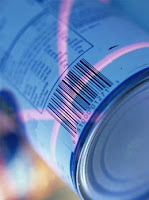Retail @ Information Technology

Imagine a shopping cart equipped with a scanner and a touch-screen computer that acts as a virtual personal shopper. As you scan items and put them in your cart, the computer offers information about each product and suggests complementary items. The computer keeps a list of the items in your cart with a running total so you know exactly how much you're spending. When finished shopping, you head to a self-checkout stand or to a cashier. Because your items are already totaled and bagged, the wait time is minimal. All you have to do is pay.
The power behind this hassle-free shopping experience is radio frequency identification (RFID) technology. RFID is helping retailers around the world improve customer satisfaction and increase sales. The technology is transforming the retail industry by offering retailers real-time visibility into inventory and product movement to improve store productivity and loss prevention. Many of the world's largest retailers have mandated RFID tagging. This move affects more than 200,000 manufacturers and suppliers, driving the worldwide market for hardware and software to support RFID.
This Technology is helping us in various ways like:
Inventory management
Enables inventory managers to monitor and control inventory supply at all times. By automating the inventory tracking process, stores can keep costs down by maintaining optimum inventory levels—avoiding stock-outs and eliminating unnecessary orders.
Improving customer service
Satisfied customers mean better business for retailers. By using RFID, your staff can identify the exact location of any retail item at any time. Customer requests can be handled quickly and easily by your customer service team through access to a centralized database. RFID-tagged items offer store-to-store visibility, so items can be located immediately with the touch of a button. This level of product accessibility results in shorter wait times for customers and offers a better shopping experience. Improving overall store efficiencies ultimately results in greater savings to customers.
Boosting customer loyalty
RFID can be the personal shopper of the future. By using RFID technology, retailers can collect information about their customers' purchasing trends and offer rewards targeted to those interests. RFID can enable your marketing and customer service teams to identify customers, call up account histories, and provide value-added services to help create a personalized shopping experience. For example, one clothing retailer in New York is using RFID smart labels to store information about each item in the store, such as fabric content, available sizes and colors, and suggested complementary items or accessories. RFID readers in the fitting rooms are connected to computer monitors so customers can view all the information and make decisions—without ever having to leave the fitting room. And, because privacy is a primary concern, advanced security technology enables your IT staff to better protect all information. Participation is optional for each customer.
Comments